ASCII Erika
Experiment
2014
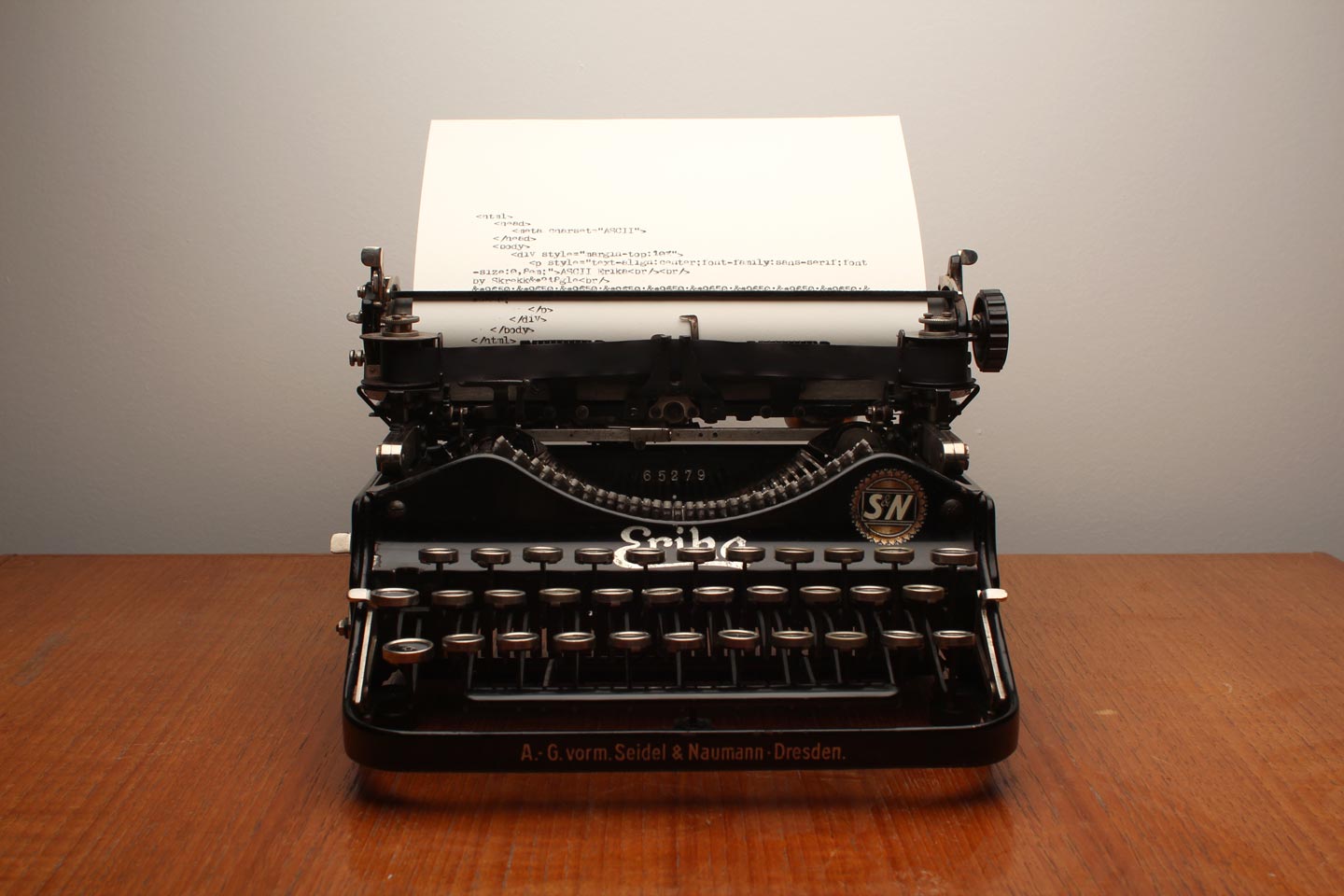
A modified 1923 Erika typewriter and its written output looks at the materiality of computer code.
The intent behind this somewhat contradictory revamp is twofold; First of all, the striking contrast between the digital language and the archaic analog device it has been written on. But perhaps more important, ‘ASCII Erika’ is also an argument for the craft of computer code. This infrastructure is often so abstract and complex that it’s easy to forget that most code is written by human hands.
This presentation of it; ink on paper - characters punched out one by one, underlines the idea. In addition, the level of skill and accuracy, the fragile language of computer code requires, is exemplified in the highlighted typos which would surely shift and break functionality.
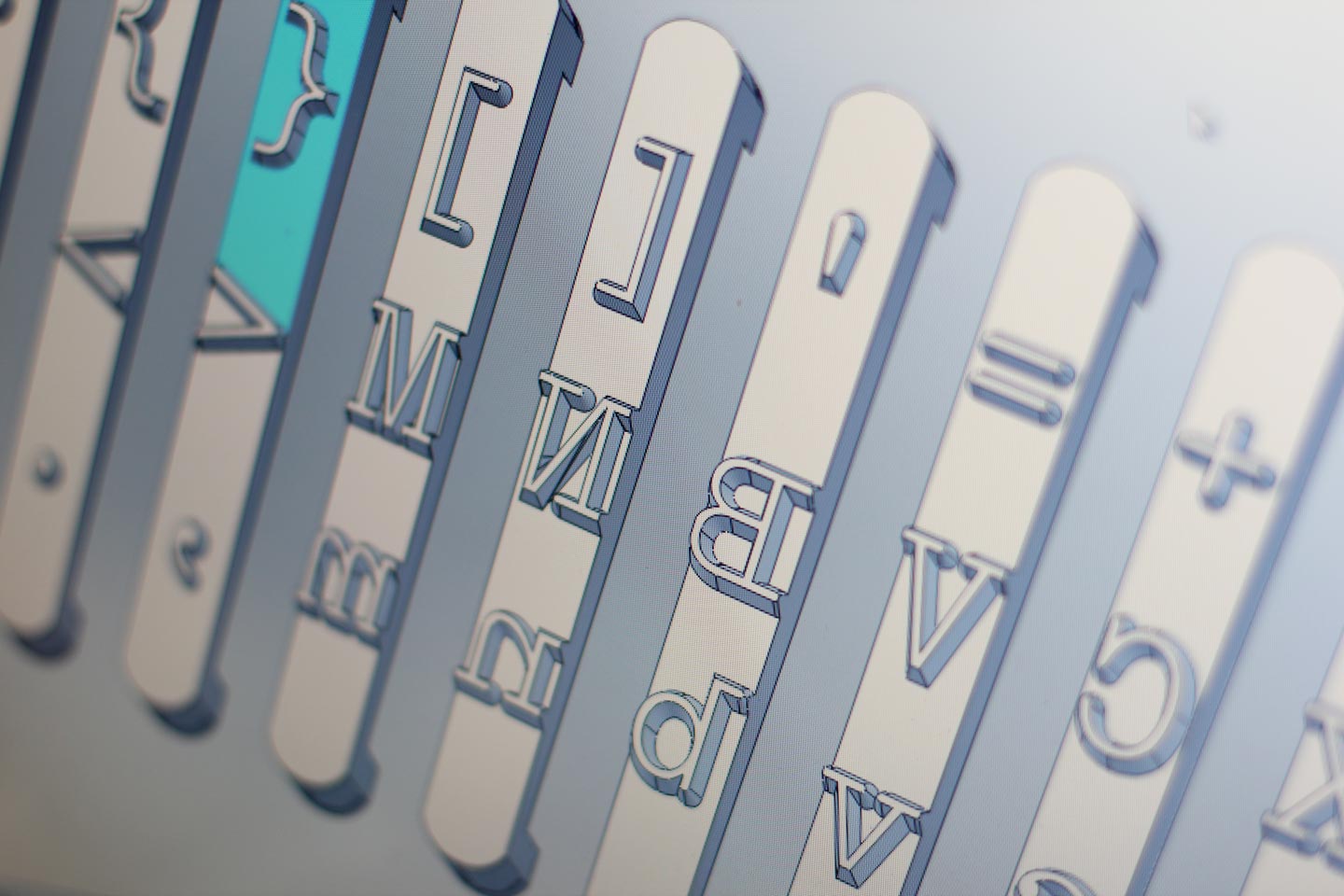
Erika is modified in the way that its original typebars has been replaced with ASCII characters...
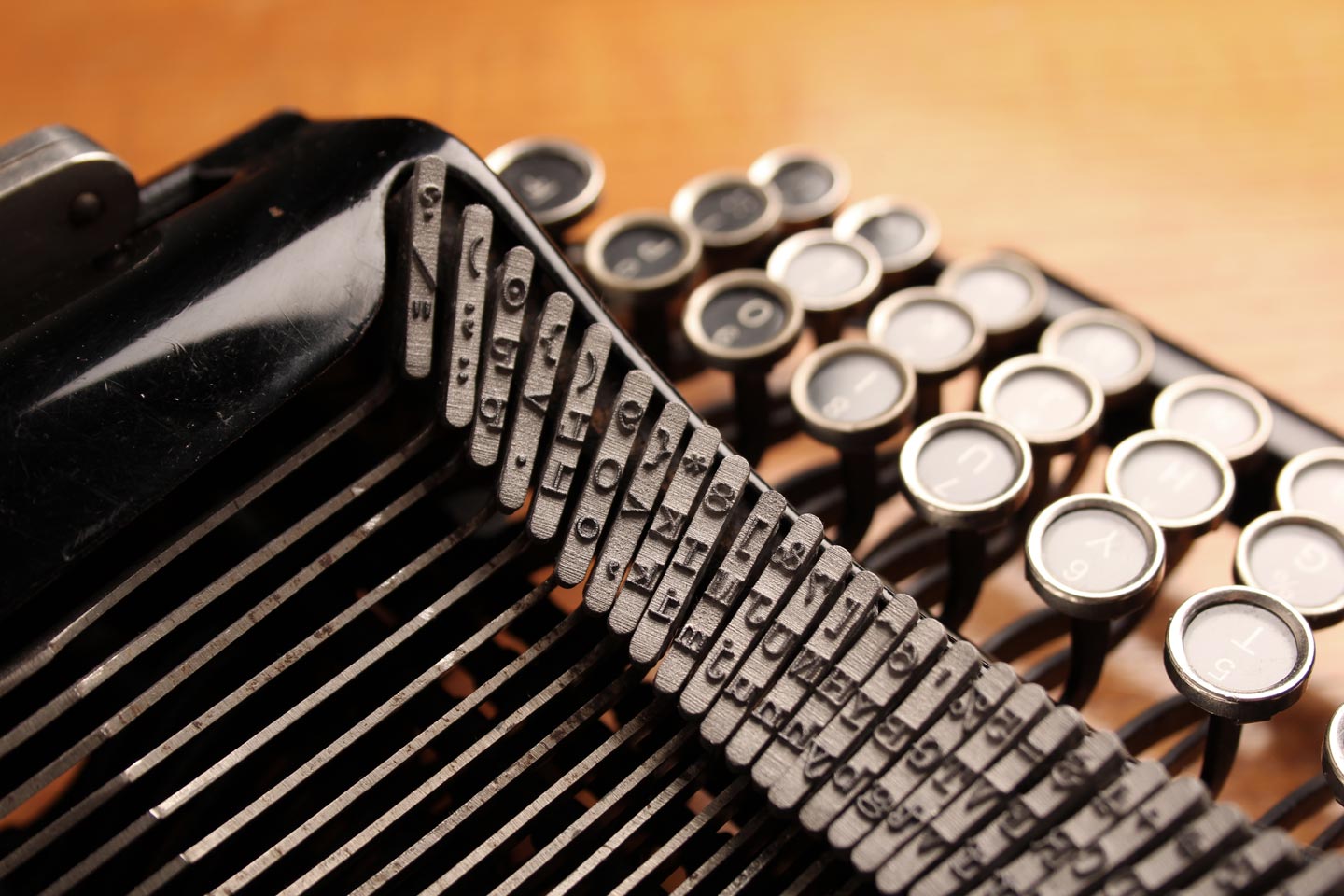
...produced with high resolution 3d printed steel parts.
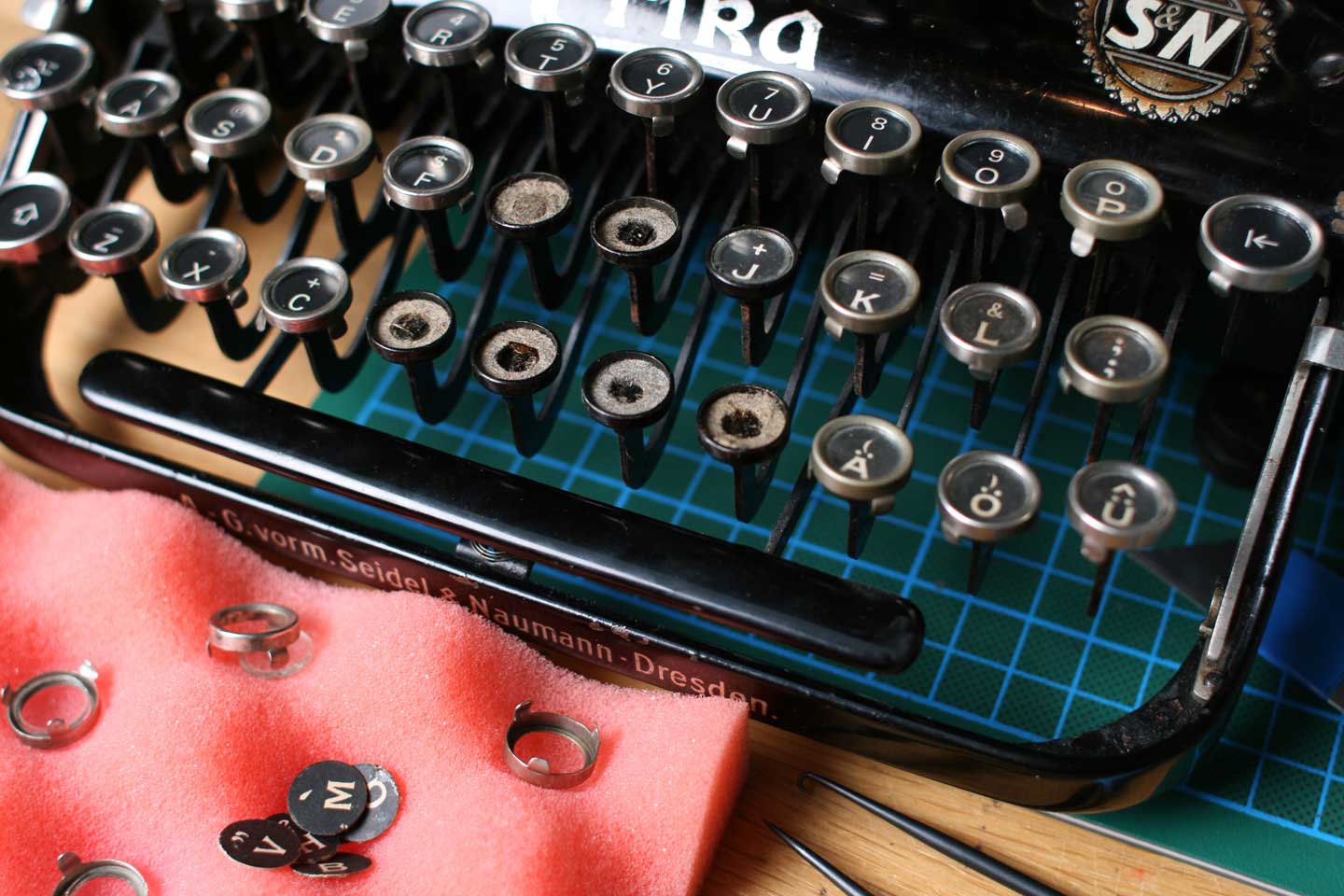
Accordingly, graphics on the keyboard layout has also been altered.
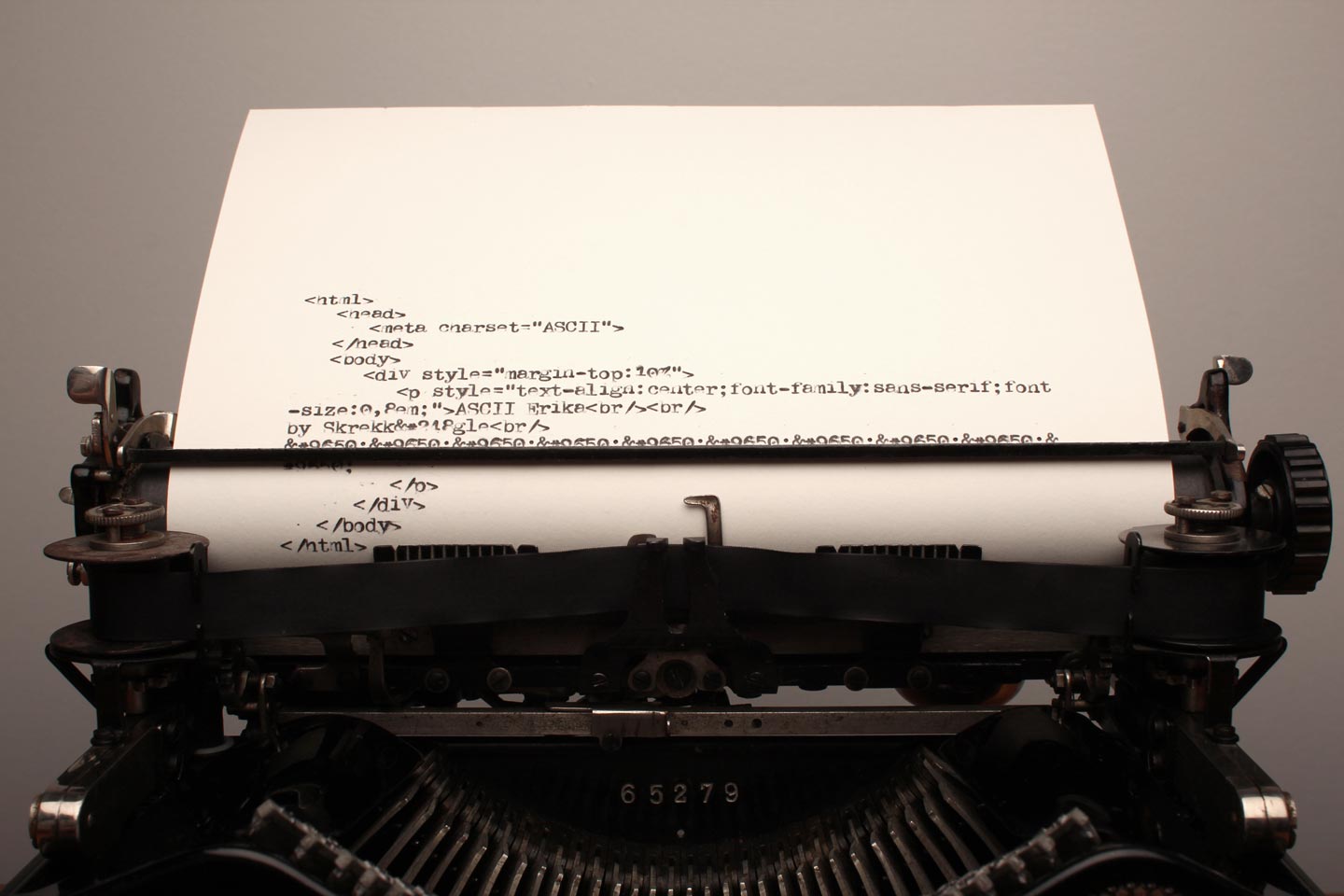
This allows the Erika to write computer code!
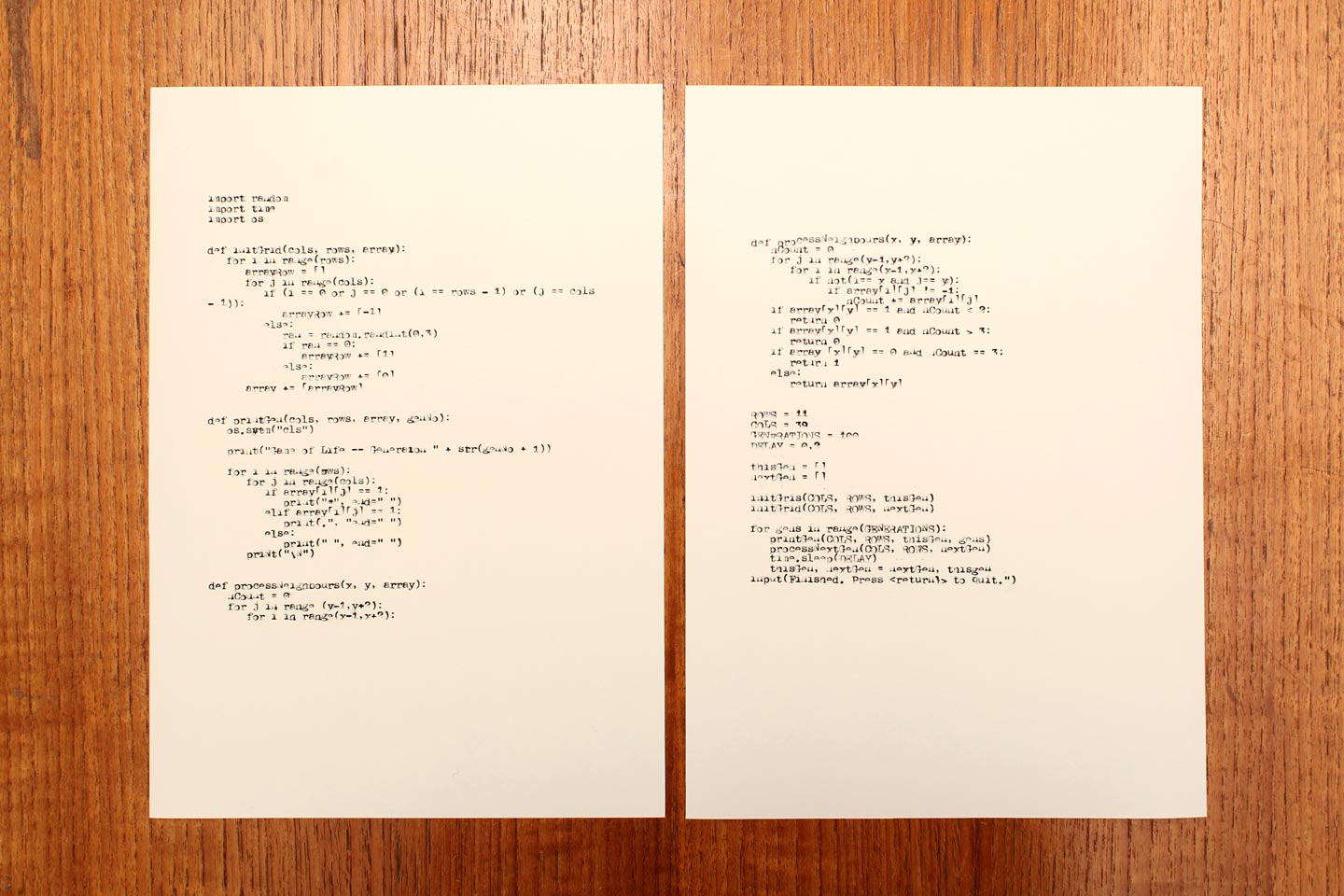
More images on Flickr, Notes and references hidden below.
ASCII Erika’s output text is for many characters vertically offset, unclear, or even illegible. This is due to inaccurate fastening and warping in the 3D-print, and was to some extent impossible to avoid.
This project is inspired by James Bridle’s “This is a Working Shop”.
The “Game of Life” Python code is fetched from usingpython.com.